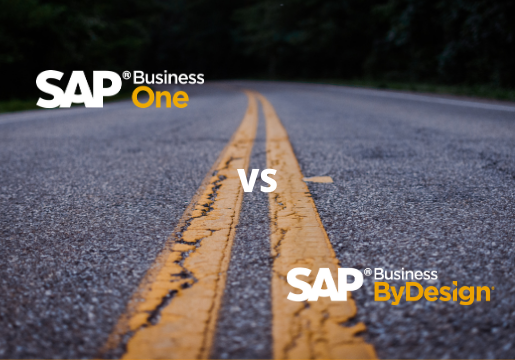Note: This blog post was edited to include the latest information on 2 June 2020.
If you’re considering SAP Business One, or are already using SAP Business One on Microsoft SQL, you’ve probably heard a lot of talk about HANA.
SAP HANA and Microsoft SQL are relational database management systems developed by SAP and Microsoft respectively. As database servers, their main function is to store and retrieve data requested by other software (e.g. SAP Business One). The latest versions of both systems are SAP Hana 2.0 and Microsoft SQL Server 2019 respectively.
However, there are distinctive differences between them. I’ll use a very simple analogy to summarise the differences.
Let’s say SAP Business One is a car. You can choose to power your car with either engine — Microsoft SQL or SAP HANA.
With Microsoft SQL, it’s like getting a Mazda-built engine. It’s popular, widely used, and ensures you safely move from Point A to B.
SAP HANA is a totally different story. Suddenly, you hear the powerful growl of a Maserati engine resonating deep from within your car.
And in that moment, you know your journey will never be quite the same.
What Makes SAP HANA Different from Microsoft SQL?
Before we go into the differences, check out this excellent 2-minute overview of what SAP HANA is:
In a nutshell, SAP HANA differs from Microsoft SQL in several areas:
Speed and Scalability
SAP HANA is an in-memory, column-oriented relational database management system. In layman’s terms, your data is stored directly on RAM memory. This means your system no longer needs to read from the hard disk first before moving the data to your RAM for processing, which is part of Microsoft SQL’s data retrieval process.
The result? Super speedy performance and processing, thanks to highly accelerated access to data – even if you’ve massive volumes of data.
Clear HANA Strategic Roadmap
SAP has a very clear and focused roadmap for SAP HANA, and they’re continually pushing boundaries of traditional business applications for in-memory database. Users of SAP HANA can rest assured that SAP will continue to innovate in areas of mobility, usability and dashboard reporting capability.
Microsoft SQL on the other hand, has evolved over time to meet the varying needs of companies. There are at least a dozen different versions of Microsoft SQL servers that are meant to cater to different audiences. Microsoft Azure SQL database for example, is the Cloud-based version of Microsoft SQL on Microsoft Azure.
Greater Analytics Capabilities
SAP HANA also performs advanced analytics and includes ELT capabilities, doubling up as an application server.
Or to put it simply, SAP HANA doesn’t need a separate database for analytics. All data is stored in the RAM and BI software. Therefore, you can run analytical reports almost instantly for multiple users who need to access different databases for different purposes at the same time.
More importantly, HANA allows for real-time analytics. Most BI tools, such as Microsoft Power BI, are unable to perform analytics in real time if they’re running on Microsoft SQL. They can only perform this function at set schedules.
So if you’re on Microsoft SQL and need your BI tools to perform real-time analytics for your ERP Software, you’ll often require a separate data warehouse and/or engage a third-party vendor to set up the backend specifications.
For example, you can use Power BI to visualize data for your SAP Business One on Microsoft SQL, but you’ll require additional script customization by a third-party vendor. In the long-run, that might end up even more costly than employing SAP HANA from the start.
Unique Bonus Features in SAP Business One on HANA
Both SAP HANA and Microsoft SQL support the core business features you’d expect from SAP Business One. However, SAP Business One users who utilise SAP HANA gain unique benefits that aren’t available to Microsoft SQL:
- Faster software development and deployment with SAP HANA’s pre-packaged business logic
- Advanced inventory status check function, cash-flow forecast, and other additional features
- Over 50 built-in dashboards and KPIs, and pre-built data sets that allow users to pull data from different sources for BI analytics
- Google-like search function for intuitive query searches within SAP Business One
- With HANA 2.0, database management has been enhanced.
- First major database platform to be optimised for persistent memory technology, greatly improving main memory capacity and data loading at startup.
Higher Server Specifications to Support Performance
Because SAP HANA delivers far superior power and functionalities than Microsoft SQL, the server specifications needed for SAP HANA are also higher.
To deploy HANA, you need at least 64GB of RAM as it needs to consolidate all ERP transactions in your RAM. Basically, you’re paying for power, and can expect higher investment for SAP HANA than Microsoft SQL.
As of Version 10.0, SAP Business One for HANA will also only be compatible with SAP HANA Enterprise Edition 2.0.
The Verdict
Both solutions have their compelling benefits and strengths to offer.
For small and midsized enterprises (SMEs) that need to speedily process massive volume of data and transactions, gain insights into data in real-time, and utilise bonus features in SAP Business One, SAP HANA will be a great option to consider. In the long-run, SAP Business One on HANA will yield greater ROI and value for your company.
However, if those factors aren’t highly crucial to your business, then it might be more cost-effective to deploy SAP Business One on Microsoft SQL. Microsoft SQL has also been in the market for a long time, so you’re more likely to find a third-party vendor who knows how to support and maintain it.
If you want to know more about SAP HANA or Microsoft SQL for your SAP Business One investment, just drop an enquiry here, and one of our consultants will get back to you shortly. Or check out our free solution brief about SAP Business One (SAP B1) on SAP HANA below to learn more about the product.




